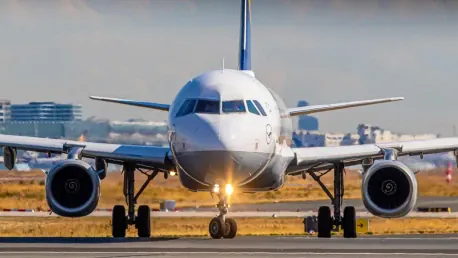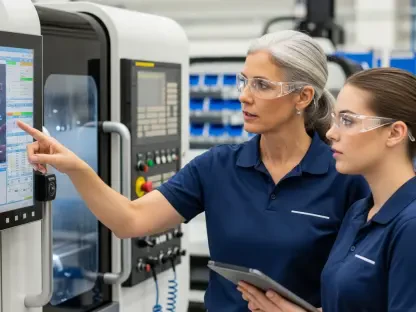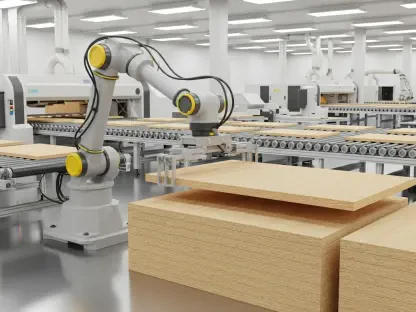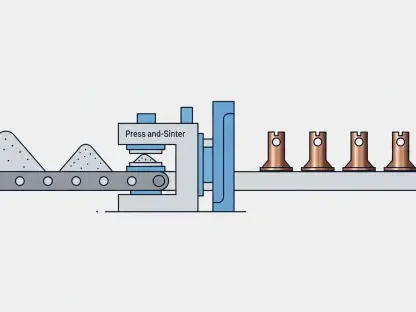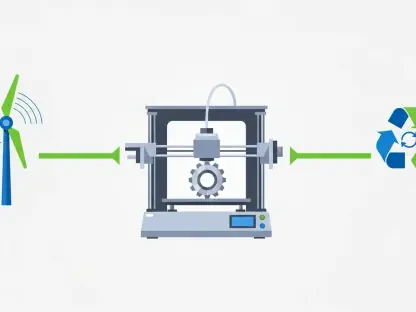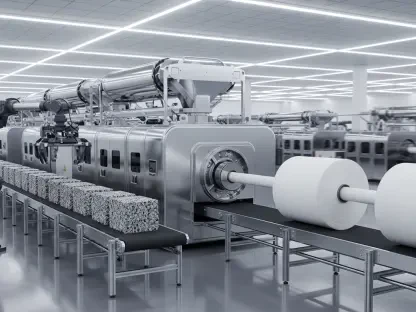The aviation industry is constantly seeking innovative solutions to enhance efficiency, reduce costs, and improve performance. One such groundbreaking technology is 3D printing, also known as Additive Manufacturing (AM). This article delves into how 3D printing is revolutionizing aviation supply chains, with a particular focus on LOT Polish Airlines’ adoption of 3D-printed arm caps for its Boeing 737 fleet’s economy class seats.
Enhancing Durability and Performance of Aircraft Components
Addressing Common Failure Points
The durability issues of traditionally manufactured arm caps for economy class seats are becoming more apparent as the rubber surface separates from the injection-molded frame, and breakage occurs at the seat attachment point. These frequent wear and tear problems create logistical challenges for airlines, causing increased difficulty in securing replacements through traditional supply chains. Given these challenges, airlines must explore innovative alternatives to ensure their fleet’s maintenance remains efficient and cost-effective.
LOT Polish Airlines faced these very issues, prompting the airline to seek a solution that not only addresses the immediate repair needs but also enhances the overall durability of its aircraft components. The constant need to replace these arm caps through traditional supply chains was time-consuming and costly. Thus, LOT decided to collaborate with AM Craft, a company specializing in 3D printing, to redesign and create a more resilient component. This initiative demonstrated how incorporating 3D printing technology could resolve longstanding issues in the aviation industry.
The Role of 3D Printing in Improving Durability
LOT Polish Airlines turned to AM Craft, which leveraged 3D printers from Stratasys and ULTEM 9085 filament, known for its compliance with flame, smoke, and toxicity (FST) regulations. This high-performance polymer allowed AM Craft to produce single-piece arm caps that eliminated common points of failure associated with multi-part assemblies. The design also strengthened the seat attachment area, significantly improving the durability and performance of the arm caps, ultimately leading to fewer part breakages and a more resilient component.
The successful implementation of such 3D-printed components underscores the potential of AM not only for enhancing durability but also for improving overall operational efficiency. By taking an innovative approach, LOT Polish Airlines was able to overcome significant durability challenges, reduce maintenance costs, and enhance passenger experience. The collaboration with AM Craft highlighted the potential of 3D printing to redesign and improve critical aircraft components, setting a precedent for broader adoption across the industry.
Overcoming Logistical Challenges
Traditional Supply Chain Limitations
The aviation industry’s supply chains are complex and global, often leading to logistical challenges, especially in the face of frequent wear and tear of essential components. Traditional manufacturing processes can be sluggish and inflexible, causing delays and escalating costs when sourcing replacement parts. This situation is particularly problematic for components like arm caps that are prone to quick deterioration. Airlines often grapple with the inability to secure timely replacements, impacting their operations and passenger experience.
Traditional supply chains, with their inherent inflexibility, cannot always meet the urgent demand for replacement parts in a timely manner. As airlines continue to face mounting pressures to enhance operational efficiency and reduce costs, the need for more adaptable and localized production methods becomes increasingly evident. Enter 3D printing—a technological innovation promising to mitigate these longstanding logistical bottlenecks by enabling on-demand manufacturing and local production capabilities.
3D Printing as a Viable Solution
3D printing offers a promising solution to the limitations posed by traditional supply chains in aviation. By facilitating on-demand production near the point of use, it minimizes lead times and reduces inventory costs. AM Craft’s expertise in 3D printing allowed it to produce and deliver 1,200 arm caps to LOT Polish Airlines, all endowed with an EASA Form 1 Airworthiness Certificate to ensure compliance with stringent aviation regulations. This remarkable feat demonstrated 3D printing’s efficacy in streamlining aviation supply chains.
The capability to produce parts instantly and as needed not only significantly decreases wait times for replacements but also spares airlines the financial burden of maintaining large inventories. Additionally, 3D printing’s capacity to customize parts on short notice aligns perfectly with the fast-paced demands of modern aviation. The successful collaboration between LOT Polish Airlines and AM Craft serves as a testament to how 3D printing can dynamically enhance logistical efficiency and operational agility in the aviation sector.
Strategic Investments and Collaborations
Stratasys’ Role in Aviation
Stratasys has established itself as a pioneer in high-performance thermoplastics like ULTEM 9085 and has played a crucial role in integrating 3D printing into aviation. The company garnered significant attention when Airbus incorporated over 1,000 3D-printed parts into its A350 XWB aircraft a decade ago. This landmark achievement showcased the potential of 3D printing in revolutionizing the production and assembly of complex aircraft components, leading to a ripple effect across the industry.
Since its successful collaboration with Airbus, Stratasys has made strategic investments to fortify its presence in the aviation sector. Recognizing the transformative potential of 3D printing, the company has continuously expanded its capabilities, including investing in AM Craft. This move underscores Stratasys’ commitment to advancing 3D printing technologies and solidifying their applications within commercial aviation. Through its innovation and strategic alliances, Stratasys continues to shape the future of aircraft manufacturing and maintenance.
Expanding AM Craft’s Capabilities
AM Craft, an aviation supplier approved under EASA Part 21G, has successfully expanded its capabilities to produce certified flight parts for global airlines. By collaborating with independent partners and working through a global distributed production network, AM Craft can deliver certified components precisely where needed, ensuring that airlines have access to high-quality parts regardless of geographic constraints. This network helps mitigate the risks associated with traditional supply chain disruptions.
The collaboration with companies like Finnair to 3D print Passenger Service Unit (PSU) fill panels for its Airbus A320 fleet further exemplifies AM Craft’s growing presence and expertise in the commercial aviation sector. The company also extended its production capabilities in Germany to reinforce its footprint in key aviation hubs like Hamburg. Such strategic expansions and collaborations signify substantial progress, showing how 3D printing is gaining momentum and becoming integral to aviation supply chains.
Broader Adoption in Mobility Sectors
3D Printing in the Rail Industry
The rail industry has shown remarkable transparency in its adoption of 3D printing compared to the more clandestine aerospace sector. Managed by Deutsche Bahn, the European Mobility goes Additive network has publicly shared its accomplishments in producing over 150,000 parts through 3D printing. This openness illustrates the technology’s potential to enhance supply chain resilience across various mobility sectors, setting a precedent for other industries to follow suit.
By showcasing the practical applications of 3D printing, the rail industry highlights the benefits of adopting this technology for maintenance, repair, and overhaul (MRO) operations. The ability to produce parts locally and on-demand reduces dependency on slow and cumbersome traditional supply chains. The public success of the rail industry in implementing 3D printing not only serves as a proof-of-concept but also encourages broader adoption of this innovative technology across other mobility sectors.
Gradual Adoption in the Automotive Repair Sector
While the automotive repair sector has been slower to adopt 3D printing technology, companies like Auto Additive, Autentica, and Würth Additive Group are gradually pushing the industry towards 3D printing solutions. These companies are demonstrating how AM can streamline the production of replacement parts, reduce lead times, and minimize costs, creating a compelling case for wider adoption. 3D printing’s impact is poised to extend beyond aviation and rail, offering transformative benefits to the automotive sector.
The trend suggests that MRO operations for supply chain resilience could be the gateway for broader AM adoption across various industries. As automotive companies begin to explore the potential of 3D printing, the technology’s advantages become increasingly apparent. The gradual integration of AM into automotive repair sets the stage for wider implementation, showcasing how innovative solutions can revolutionize traditional manufacturing processes and supply chains across diverse sectors.
Future Prospects for 3D Printing in Aviation
Potential for On-Demand Production
As advancements in 3D printing continue to evolve, the potential for on-demand production at the point of use becomes more feasible. This approach is akin to current military applications of AM, where parts are printed as needed, reducing the dependency on traditional manufacturing processes. On-demand production could further streamline supply chains, offering flexibility and responsiveness that traditional methods cannot match. The efficiencies gained from this model could significantly impact the aviation industry’s operational capabilities.
The future of 3D printing in aviation points towards increased decentralization of manufacturing processes. By enabling airlines to produce critical components locally, the industry can mitigate the risks associated with global supply chain disruptions. This shift towards on-demand production aligns with the broader trend of digital transformation, where agility, efficiency, and innovation are paramount. The continuous evolution of 3D printing technologies promises to usher in a new era of operational excellence and resilience for the aviation sector.
Implications for MRO Operations
The aviation industry is always on the lookout for innovative solutions to boost efficiency, cut costs, and enhance performance. One major technological advancement making waves in this field is 3D printing, also referred to as Additive Manufacturing (AM). This technology is significantly transforming aviation supply chains by offering new possibilities in manufacturing and maintenance. A prime example of this shift is LOT Polish Airlines, which has embraced 3D printing for its Boeing 737 fleet’s economy class seats. Specifically, the airline has started using 3D-printed arm caps for these seats, showcasing how AM can be a game-changer in terms of production speed, cost-efficiency, and customization. By integrating 3D-printed components, airlines can reduce dependency on traditional supply chains, minimize production delays, and achieve more streamlined operations. This shift not only improves operational efficiency but also sets a new standard for innovation in the aviation industry, highlighting the profound impact of 3D printing on modern air travel logistics.
